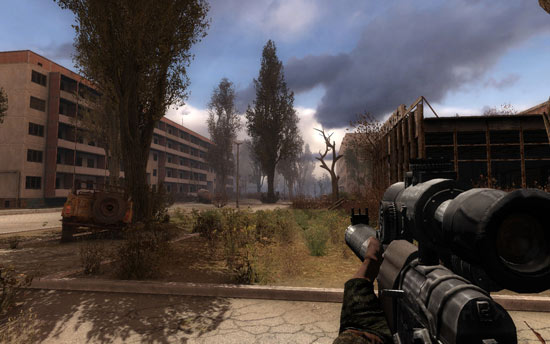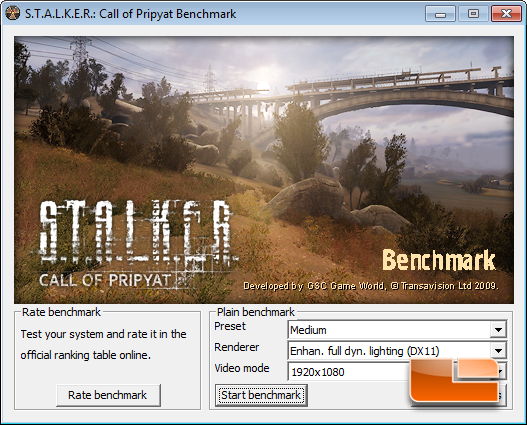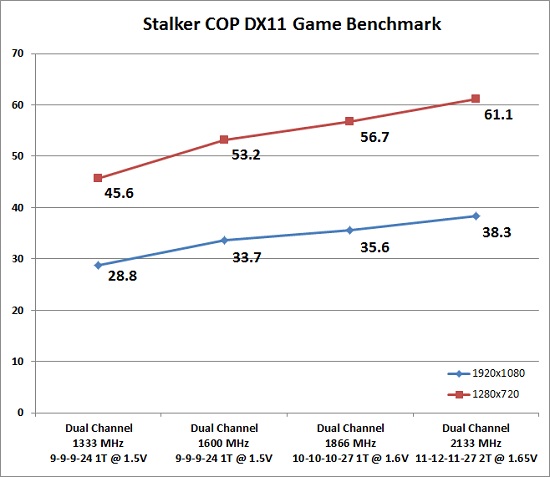Testing Memory Speeds on AMD’s A10-5800K Trinity APU
S.T.A.L.K.E.R.: Call of Pripyat

The events of S.T.A.L.K.E.R.: Call of Pripyat unfold shortly after the end of S.T.A.L.K.E.R.: Shadow of Chernobyl following the ending in which Strelok destroys the C-Consciousness. Having discovered the open path to the Zone’s center, the government decides to stage a large-scale operation to take control of the Chernobyl nuclear plant.
S.T.A.L.K.E.R.: Call of Pripyat utilizes the XRAY 1.6 Engine, allowing advanced modern graphical features through the use of DirectX 11 to be fully integrated; one outstanding feature being the inclusion of real-time GPU tessellation. Regions and maps feature photo realistic scenes of the region it is made to represent. There is also extensive support for older versions of DirectX, meaning that Call of Pripyat is also compatible with older DirectX 8, 9, 10 and 10.1 graphics cards.

The game S.T.A.L.K.E.R.: CoP has no internal benchmarking tools built into the game engine, but they do have a standalone benchmark available that we used for our testing purposes. The screen capture above shows the main window of the benchmark with our settings. Notice we are running Enhanced Full Dynamic Lighting “DX11” as our renderer. Under the advanced settings we disabled tessellation, MSAA and ambient occlusion.

Benchmark Results: Benchmarking S.T.A.L.K.E.R.: Call of Pripyat showed a significant performance jump when the memory clock speed is increased from 1333MHz to 2133MHz. After the dust settled we found that dual channel DDR3 memory running 2133MHz with CL11 timings was ~33% faster than dual channel DDR3 memory at 1333MHz with CL9 timings. System memory speed plays a critical role in graphics performance as you can see from the chart above.

Comments are closed.